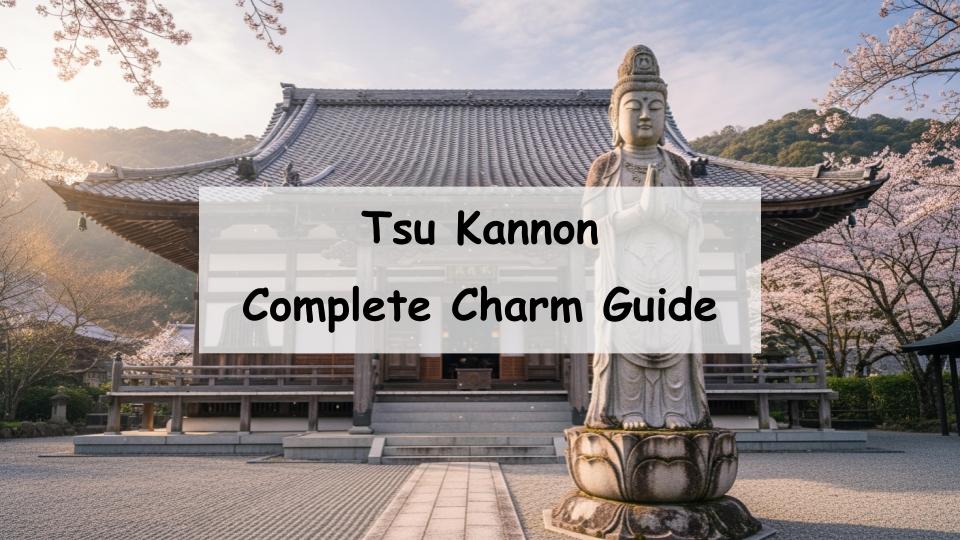Are you wondering, “What kind of temple is Tsu Kannon? What’s its history and what are the highlights? Is it easy to access?” If so, you’re not alone.
To give you the quick answer: Tsu Kannon, located in Tsu City, Mie Prefecture, is one of Japan’s Three Great Kannon Temples. With a long and deep-rooted history, it is a sacred site beloved by locals and visitors alike. It is said to bring blessings such as success in business and protection from misfortune, making it a popular destination for pilgrims from across the country.
In this article, we’ll explore everything you need to know about Tsu Kannon—from its origins and historical background to its architecture, annual events, surrounding attractions, and practical access information. Whether you’re visiting for the first time or planning a return trip, this guide will help you fully enjoy the wonders of Tsu Kannon.
What is Tsu Kannon? History and Background
The Origins and Historical Background of Tsu Kannon
Tsu Kannon, officially named Ennichizan Kannonji, is believed to have been founded in the Nara period. It has long served as a place of prayer for maritime safety, growing alongside the port town of Tsu. It flourished under the protection of feudal lords during the Sengoku and Edo periods and continues to be a central religious site in the region.
Why Tsu Kannon is One of Japan’s Three Great Kannon Temples
Tsu Kannon stands alongside Asakusa Kannon in Tokyo and Osu Kannon in Nagoya as one of the “Three Great Kannon Temples” of Japan. These temples represent the widespread devotion to Kannon (the Bodhisattva of Compassion) and have long attracted the faith of common people. Tsu Kannon remains a major spiritual hub in the Tokai region.
The Principal Image and Its Blessings
The temple enshrines the Holy Kannon (Sho-Kannon Bosatsu), known for its compassionate nature. Visitors come to pray for blessings such as prosperity in business, family safety, protection from evil, and traffic safety.
Highlights and Spiritual Appeal of Tsu Kannon
Architectural Beauty of the Main Hall and Grounds
Tsu Kannon’s main hall exudes a dignified presence with its traditional Japanese temple architecture. The elegant curves of its roof and detailed carvings reflect the master craftsmanship of the Edo period. The grounds are adorned with stone lanterns and sacred statues, offering both spiritual and aesthetic pleasures.
Seasonal Events and Scenic Beauty
Throughout the year, the temple hosts events such as New Year’s prayers, Setsubun festivals, and spring flower festivals. Each season paints the temple in different hues—cherry blossoms in spring, lush greens in summer, vibrant foliage in autumn, and crisp serenity in winter.
Community Connections and Local Devotion
More than just a tourist site, Tsu Kannon is deeply rooted in the lives of locals. It frequently collaborates with the surrounding shopping streets and hosts cultural events, making it a vital part of the community’s spiritual and social life.
Sightseeing and Enjoyment Around Tsu Kannon
Nearby Attractions Within Walking Distance
Attractions such as Tsu Castle Ruins and Tsu Manaka Plaza are located just a short walk from the temple. These spots make it easy to enjoy a full sightseeing experience without needing additional transportation.
Local Cuisine and Souvenir Shopping
Tsu is famous for foods like grilled eel, miso-katsu, and tempura rice balls. You’ll find local eateries and souvenir shops near the temple, and there are also exclusive charms and talismans available only at Tsu Kannon.
Recommended Routes for Families and Couples
A popular plan includes visiting Tsu Kannon and Tsu Castle in the morning, enjoying a local eel lunch, and relaxing in a nearby park in the afternoon. Couples may also enjoy the romantic atmosphere of evening illuminations or seasonal festivals.
Access and Tips for Visiting Tsu Kannon
How to Access by Train or Bus
Tsu Kannon is about a 15-minute walk from Kintetsu Tsu-shinmachi Station. Alternatively, you can take a Mie Kotsu Bus and get off at the “Kannonji” stop. It’s also easily accessible from major cities like Nagoya or Osaka.
Parking Information for Drivers
If you’re coming by car, paid parking is available near the temple grounds. During peak seasons such as New Year’s, parking may be limited, so arriving early or using public transportation is recommended.
Proper Manners and the Best Time to Visit
When visiting, it’s polite to remove your hat, bow, and quietly offer your prayers. Early mornings are ideal for a peaceful visit before crowds arrive. For a serene experience, mornings on weekdays are highly recommended.
Things to Know Before Visiting Tsu Kannon
Can You Enjoy It on a Rainy Day?
Absolutely. Even on rainy days, you can enjoy the temple by exploring the main hall and covered walkways. In fact, the temple’s stone pathways glistening in the rain create a peaceful, meditative atmosphere.
Crowds During New Year and Setsubun
During the New Year and Setsubun festivals, large crowds are expected, and lines may form. To avoid congestion, consider visiting early in the morning or on weekdays before or after the main event dates.
What to Bring and What to Wear
Wear comfortable walking shoes and dress appropriately for the season. In summer, bring sun protection; in winter, dress warmly. Also, carrying small change for offerings and purchases will come in handy.
Tsu Kannon is not just a temple—it’s a place where history, community, spirituality, and culture come together. Whether you’re seeking peace, blessings, or a meaningful cultural experience, a visit to Tsu Kannon is sure to leave a lasting impression.







Comment